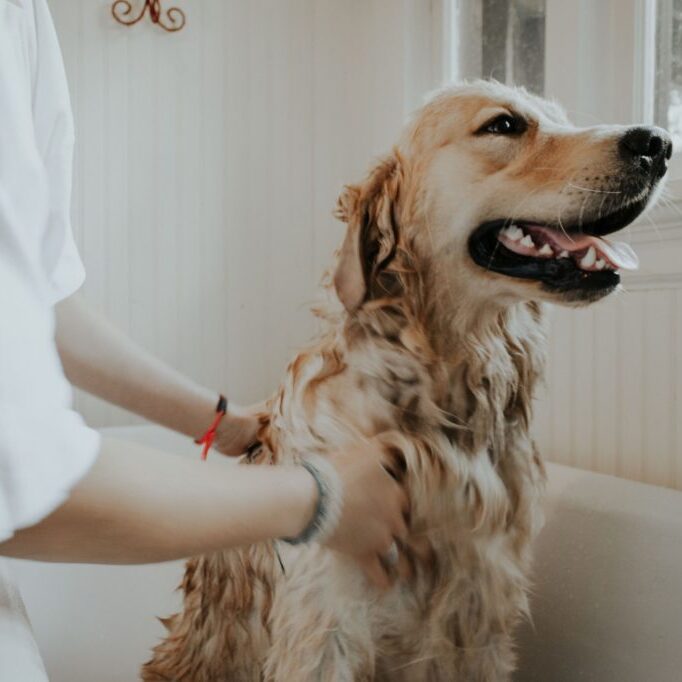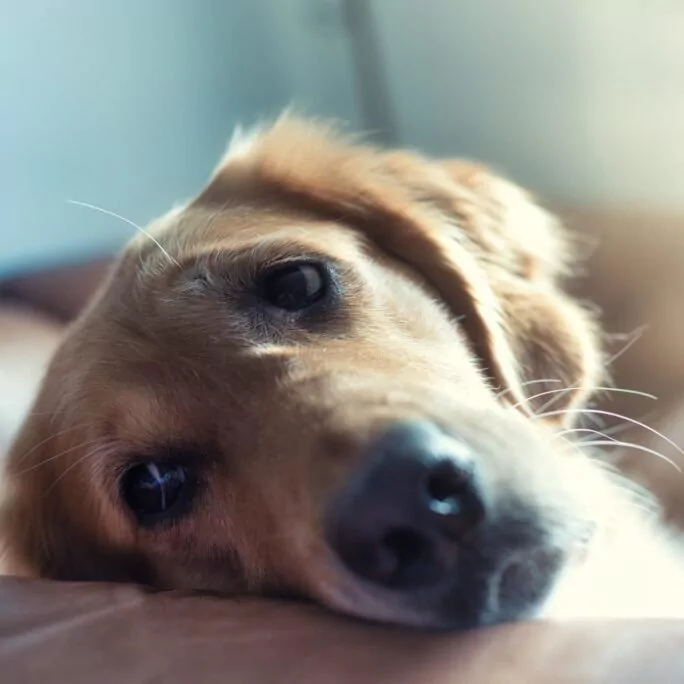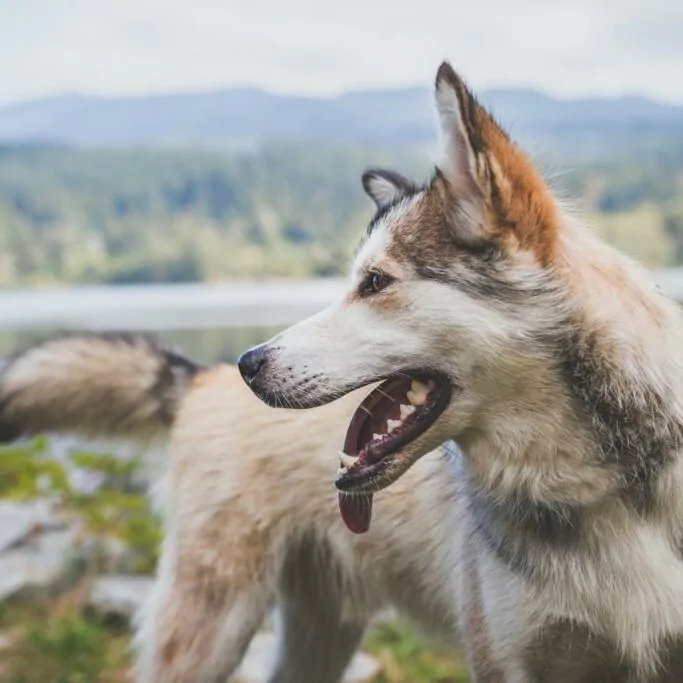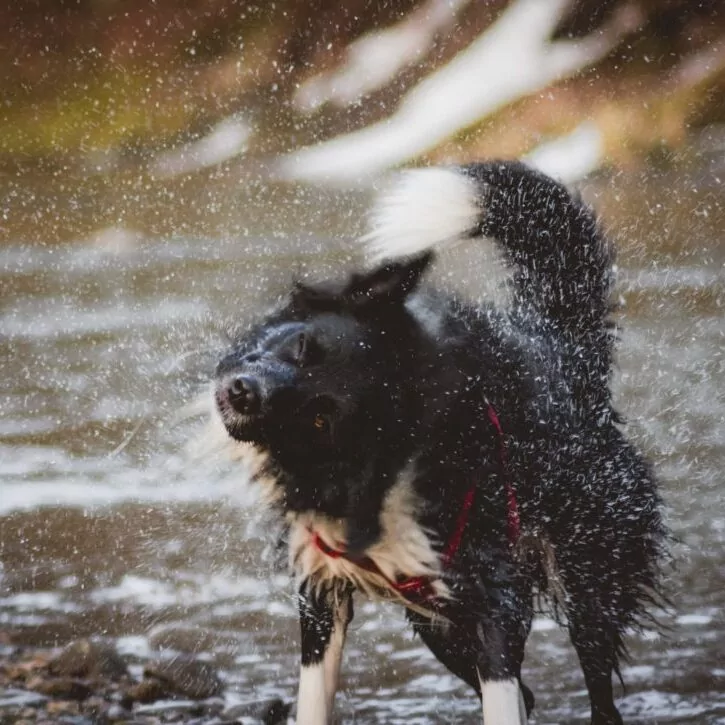Dog Health
Tooth Talk: What to Know About Your Dog’s Chompers

When we think dogs, we think teeth. And they’re not just for biting! Those pearly whites are the canine equivalent of fingers. Dogs use them to eat, of course, but also to grasp prey or toys, groom themselves, shred meat off bones, entertain themselves by chewing, pick up tennis balls and bring them to us so we can throw them again, and to smile, smile, smile.
To do all those things, especially for the decade or more of a dog’s lifetime, teeth must be tough. Their outer covering is enamel, the hardest substance in the body, says dental doc Jan Bellows, DVM, DAVDC, who specializes in pet dentistry.
Beneath the enamel is dentin, a living tissue filled with microscopic channels containing cells and fluid. Those tiny tubules allow dentin to provide support to the enamel. On the downside, dentin is porous. If a dog chips that tough tooth enamel by chewing on something even harder—like an antler—the exposed dentin transmits painful sensations. At the center of the tooth is pulp, made up of nerves, connective tissue, blood vessels, and cells.
Of course, teeth don’t start out fully formed. Puppies are toothless when they’re born. Primary teeth start to erupt when the little puppers are just three weeks old. By 6 weeks, all 28 puppy teeth have emerged. That’s right: while adult dogs have 42 teeth, puppies have only 28 baby teeth, 14 up and 14 down. Those teeth are the incisors, canines, and some premolars. Molars and first premolars come in with the permanent teeth.
What Teeth Do
Why do dogs have four different types of teeth? Each has a different job.
Incisors are the little teeth in the front of the mouth. Think of them as your dog’s set of tweezers, there to delicately pluck out fleas or ticks that may have rudely invaded or, more pleasantly, to scrape bits of meat off a bone stolen from the trash.
Canicula? Dogs don’t drink blood, but they do have fangs. Four slightly curved canines, two up and two down in the front of the mouth, are a dog’s longest teeth. They’re good for grabbing onto or biting prey—or toys. If your dog lived in the wild, he’d use the canines to tear meat apart.
The smaller sharp, pointy teeth behind the canines (eight on the top and eight on the bottom) are called pre-molars, and they’re good for chewing, grinding, and shredding food—at least if you have a dog who’s a more thoughtful eater than the ones who just gulp food down without chewing.
You may notice a couple of extra-large teeth on each side of the upper jaw. They’re the fourth premolar and the first molar, and together they’re known as carnassial teeth, used for chewing and crushing. Also known as “cheek” teeth, because they’re located at the inside of the cheek, these are the teeth most likely to fracture when your dog is chewing on an antler, a nylon bone or a hunk of ice that he’s learned to self-dispense from your refrigerator’s in-door icemaker.
Molars, farthest back in the mouth, help dogs break up anything hard that they’re eating, like extra-crunchy dog biscuits or pieces of kibble. (By the way, kibble and hard biscuits don’t really do anything to keep your dog’s teeth clean so don’t rely on them as a stand-in for regular care.) You may have wondered if dogs get cavities. Usually not, but the ones who do are generally Labrador Retrievers, who tend to get them in the upper first molar, Dr. Bellows says. How specific is that!
The powerful molars are among the most strongly anchored in the mouth, with up to three roots holding them in place. Premolars have one to two roots per tooth (other than the fourth premolars, which have three) and canines and incisors have only one. The roots of a dog’s teeth are unusually long, with 60 percent of the tooth lying below the gumline, compared to just 30 percent in humans.
When pups are three to four months old, permanent teeth begin to emerge, pushing out primary teeth. You might find a lost tooth or two on the floor during the teething period, but you don’t have to leave a biscuit under your doggo’s pillow from the puppy tooth fairy. Teething usually ends by the time pups are six to seven months old, although sometimes it takes longer for toy or small-breed dogs.
Those little dogs can be prone to what’s called persistent primary teeth. When everything goes right, incoming adult teeth push against the root of the primary tooth, which falls out. The secondary tooth then slides into its spot like Trea Turner sliding into home. But sometimes baby teeth don’t fall out when permanent teeth come in, leading to uncomfortable sharing of the tooth socket by primary teeth hanging on for dear life and permanent teeth wanting to take over.
“That creates big problems, because it’s like putting two feet in one shoe. There’s just not enough room there,” Bellows says.
Crowded teeth cause periodontal and orthodontic problems. The adult tooth becomes displaced and may even cause a hole in the palate because it’s pointed in the wrong direction. The problem is especially common in tiny dogs such as Maltese, Yorkshire Terriers and Miniature Schnauzers, as well as flat-faced breeds such as Bulldogs, French Bulldogs, Pugs, and Boston Terriers, who may not lose their puppy teeth until too late in the process. When two teeth are crammed into a single socket, the baby tooth must be surgically removed.
Keeping a few stuffed Kong toys in the freezer for baby dogs to gnaw on during teething can help to soothe tender gums as new teeth come in. Bellows likes Kongs because they’re tough but not so hard that they can damage new (or old) teeth. Besides getting puppies used to having their mouth examined and teeth wiped or brushed from day one, the best thing you can do to encourage a pretty puppy smile is to avoid playing tug-of-war while teething takes place. That pulls teeth into the wrong position, Bellows says. Giving unsafe toys such as antlers, bones, and nylon chews is another no-no. Those can all break primary teeth, which don’t have the strong enamel and dentin of permanent teeth (and they’re not great for permanent teeth, either).
“Once those teeth break, bacteria get into the pulp and travel down to the apex of the root, which can affect the secondary tooth permanently,” Bellows says. “It’s important to give the animal something soft to chew on.” Puppies can easily choke if they swallow a piece of a toy, so chew items should also be indestructible.
Caring for Teeth
We’re going to make your day: You don’t have to brush your dog’s teeth. Bellows says hardly anyone ever does, and the good news is that there’s an easier way to clean them. The friction of gently rubbing upper teeth with a dental wipe removes a large amount of the grungy stuff that bacteria feed on. Then just throw the wipe away. Wiping the upper teeth is most important because that’s where the salivary glands exit. Their secretions contribute to formation of plaque and tartar. Wiping the lower teeth and the insides of the teeth are pluses but not mandatory.
Examine your dog’s mouth at least monthly for plaque and tartar buildup and keep tabs on breath with a regular sniff test. “Doggie breath” isn’t normal. Your dog’s mouth should smell nice—“like roses”—Bellows says. If it doesn’t, there’s something wrong. Usually that’s periodontal disease, which develops in most dogs by the time they’re three years old because no one has been wiping or brushing their teeth to keep them clean. Anyone’s breath would stink after three years of no brushing!
Get your pupper used to having his mouth and teeth touched and looked at from the very first day you bring him home. Start slow, be gentle, and practice every day. Having a dog who is willing to let you look in his mouth, look at his teeth, and use a dental wipe or brush on them will pay off in sweet breath and good dental health. Bellows’ own dog, a Pointer, knows that TV time is dental wipe time, and then he gets a treat. Win-win!
Keep treats on hand accepted by the Veterinary Oral Health Council. The VOHC reviews the safety and efficacy of pet plaque and tartar control products. Items that get their seal of approval must decrease accumulation of plaque by at least 20 percent in two independent double-blind studies.
“It’s not like you give a dental treat to the animal and then you’re not going to have any plaque or tartar, but it helps,” Bellows says.
If your dog’s breath smells like the local dump, his gums look red and inflamed, or he’s showing signs of pain such as eating less, picking up food and dropping it, or drooling, talk to your veterinarian about scheduling a dental exam and professional cleaning. This should be done at least yearly. Performed under anesthesia, a professional pet dental starts with full-mouth oral x-rays, followed by a cleaning and extractions if needed. It removes plaque and tartar below the gumline, where the bacterial action is happening. It also gives your veterinarian a chance to check the mouth for broken teeth, inflamed areas, abscesses, and masses (swellings on one side of the mouth or the other) in the oral cavity, including the tonsil area. Dogs can get oral melanomas and squamous cell carcinomas. As with any health problem, finding them earlier is better.
Your veterinarian can do a deep cleaning and place some antibiotic gel in the areas that need help, but the results won’t last long unless you follow up with daily wiping or brushing throughout your dog’s life. If you do that, your doggo will have a happier, healthier mouth and will need fewer professional cleanings. That’s great for her, for your nose, and for your wallet!
Did you find this helpful? Share it!
About VetScoop
Pets make our lives better. At VetScoop, we’re on a mission to return the favor by giving you access to trustworthy, science-based information so you can provide the best possible care for your pets.
Related Articles We Think You'd Like





